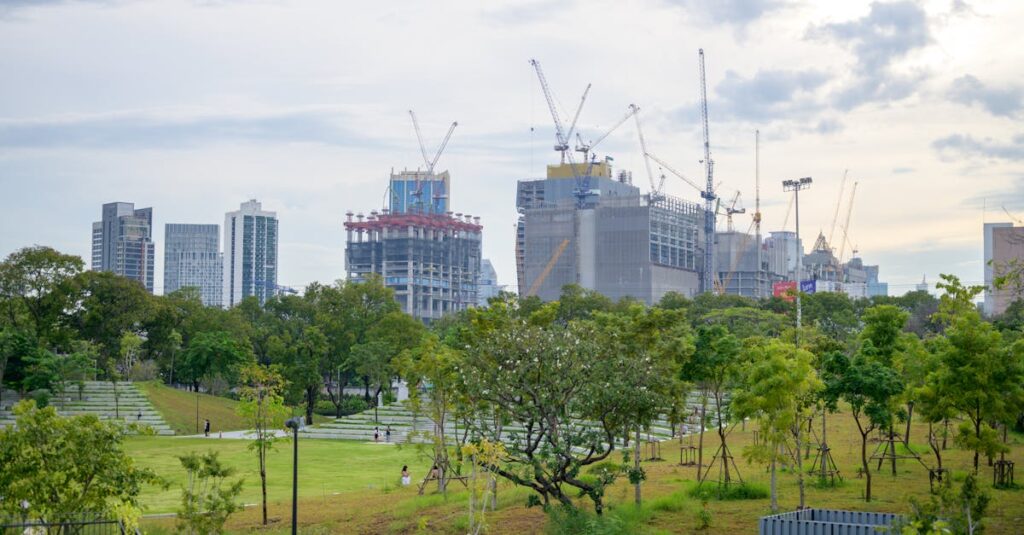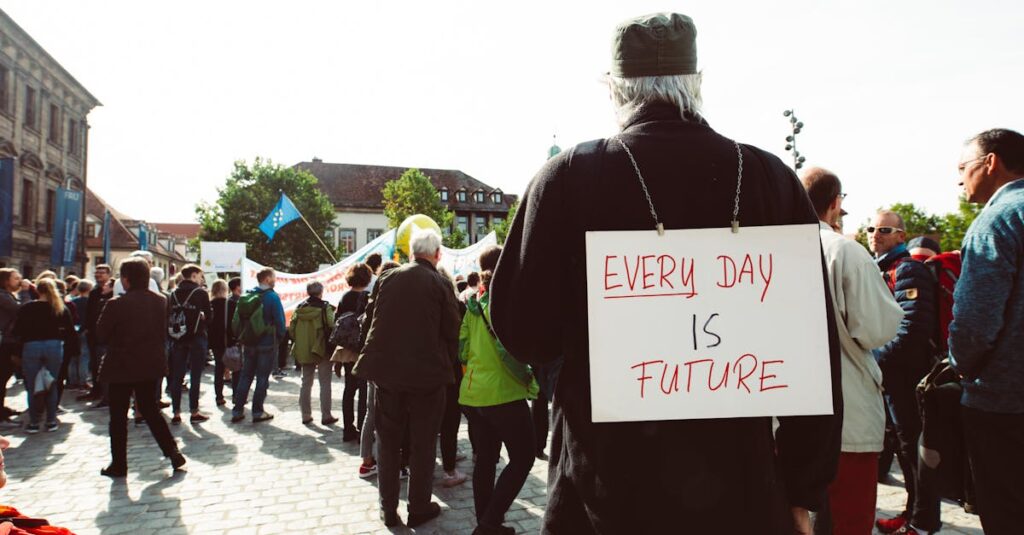Urban parks and green spaces serve as the breathing lungs of modern cities offering a much-needed escape from the concrete jungle. These verdant oases transform bustling metropolises into livable spaces where nature and urban life coexist in perfect harmony. From New York’s iconic Central Park to London’s Hyde Park these green sanctuaries have become essential components of city planning and community well-being.
In today’s fast-paced world where screen time dominates and stress levels soar urban parks provide more than just pretty scenery. They’re outdoor gyms wellness centers social hubs and natural classrooms all rolled into one. Studies show that access to green spaces can significantly improve physical health mental well-being and overall quality of life. It’s no wonder that cities worldwide are investing in creating and preserving these precious pockets of nature making them more accessible and enjoyable for everyone.
Urban Parks and Green Spaces
Urban parks create significant economic value in metropolitan areas through increased property values. Research from the Trust for Public Land shows properties adjacent to parks command 8-20% higher prices compared to similar properties without park access.
Environmental benefits of urban green spaces extend beyond aesthetic appeal. Parks absorb 1.2 pounds of carbon dioxide per square meter annually while releasing oxygen into the atmosphere. Dense tree canopies in urban parks reduce ambient temperatures by 2-4°C during summer months.
| Impact Category | Measurable Benefit |
|---|---|
| Property Value Increase | 8-20% |
| CO2 Absorption | 1.2 lbs/m² yearly |
| Temperature Reduction | 2-4°C in summer |
| Mental Health Improvement | 33% stress reduction |
These spaces serve as crucial wildlife habitats in urban environments. A single acre of urban parkland supports 4 times more bird species than developed city areas. Native plant gardens attract essential pollinators like butterflies bees.
Modern urban parks integrate smart technology to enhance visitor experience. Digital information kiosks solar-powered lighting systems automated irrigation networks monitor usage patterns optimize maintenance schedules. Cities like Singapore incorporate sensors to track air quality visitor flow patterns.
Social connectivity thrives in urban green spaces. Community gardens farmers markets outdoor concerts foster neighborhood relationships. Studies indicate residents living near parks experience 33% lower stress levels increased social bonds with neighbors.
Population density makes urban parks increasingly vital. Cities like Barcelona Copenhagen implement “15-minute city” concepts ensuring residents access green spaces within walking distance. These initiatives promote sustainable urban development enhance community livability.
Types of Urban Green Spaces
Urban green spaces encompass diverse natural areas integrated into city landscapes. These spaces serve distinct purposes ranging from recreational activities to environmental conservation.
Public Parks and Gardens
Public parks form the cornerstone of urban green infrastructure. Large municipal parks span 500+ acres featuring landscaped gardens sports facilities playgrounds water features. Neighborhood parks average 5-10 acres providing accessible recreation zones within residential areas. Botanical gardens showcase curated plant collections with specialized zones like Japanese gardens rose gardens native plant exhibits. These spaces incorporate amenities such as walking trails benches picnic areas exercise stations water fountains. Modern park designs integrate smart features including solar-powered lighting systems automated irrigation digital information kiosks.
Community Gardens and Urban Forests
Community gardens transform vacant lots into productive green spaces managed by local residents. These plots typically measure 400-600 square feet supporting 15-20 individual garden beds for growing vegetables herbs flowers. Urban forests create dense tree canopies along streets in neighborhoods around buildings. A single mature urban forest can host 50+ native tree species providing habitat for 25-30 bird species. Community-managed green spaces generate 200+ pounds of fresh produce annually while urban forests absorb 48,000 pounds of carbon dioxide per acre. Local food production programs in these spaces engage 500+ community members through educational workshops seasonal events harvest festivals.
Health Benefits of Urban Parks
Urban parks provide tangible health advantages for city residents through regular physical activity opportunities outdoors. Studies demonstrate that access to green spaces correlates with improved health outcomes across diverse population groups.
Physical Health Improvements
Regular park visits increase physical activity levels by 25% compared to neighborhoods without accessible green spaces. Park users engage in various exercises like jogging walking biking or using outdoor fitness equipment. A study in the American Journal of Public Health found that residents living within 1 mile of parks showed lower rates of obesity cardiovascular disease type 2 diabetes. Parks with dedicated exercise zones report 45% higher physical activity levels among visitors compared to traditional passive recreation areas. Children who play in parks for 60 minutes daily demonstrate better motor skills coordination balance.
| Health Metric | Improvement % |
|---|---|
| Physical Activity | +25% |
| Exercise Zone Usage | +45% |
| Obesity Rates | -12% |
| Cardiovascular Risk | -15% |
Mental Wellbeing and Stress Reduction
Urban parks reduce cortisol levels by 15% within 20 minutes of exposure to natural surroundings. Time spent in green spaces improves concentration memory cognitive function. Research published in Environmental Science & Technology reveals that park visitors experience a 33% decrease in anxiety symptoms. Natural settings enhance creativity problem-solving abilities by 50% compared to indoor environments. Park meditation areas support mindfulness practices leading to improved emotional regulation sleep quality.
| Mental Health Indicator | Impact |
|---|---|
| Cortisol Reduction | 15% |
| Anxiety Decrease | 33% |
| Creativity Boost | 50% |
| Sleep Quality | +28% |
Environmental Impact of Green Spaces
Urban parks and green spaces serve as vital environmental assets in cities, delivering measurable benefits to air quality, temperature regulation, and ecosystem health. These natural spaces act as powerful tools in addressing environmental challenges while supporting local ecosystems.
Climate Change Mitigation
Urban green spaces function as natural carbon sinks, absorbing 1.2 pounds of CO2 per square meter annually through vegetation and soil systems. Trees in urban parks reduce energy consumption by providing shade to nearby buildings, cutting cooling costs by 30% in summer months. Parks decrease the urban heat island effect by 2-4°C through evapotranspiration processes. Dense vegetation areas filter out 85% of air pollutants, including particulate matter and ground-level ozone. Green spaces reduce stormwater runoff by 65%, preventing flooding and recharging groundwater supplies through natural filtration.
Biodiversity Conservation
Urban parks create essential habitats for native species, supporting 3x more bird species than developed areas. These spaces maintain genetic diversity through connected green corridors that allow wildlife movement across urban landscapes. Native plant gardens in parks attract 8x more pollinators than traditional landscaping. Urban wetlands within parks provide breeding grounds for 15 species of amphibians on average. Parks with diverse vegetation layers host 45% more invertebrate species compared to monoculture landscapes. Green spaces protect endangered urban species by offering specialized habitats such as dead wood areas, wildflower meadows and water features.
Designing Sustainable Urban Parks
Sustainable urban parks integrate ecological principles with community needs to create lasting green spaces. These designs prioritize environmental preservation while ensuring accessibility for diverse populations.
Accessibility and Inclusivity
Universal design principles create parks that welcome visitors of all abilities. Wide paved pathways accommodate wheelchairs mobility devices with slopes under 5% grade. Multiple entrance points reduce walking distances from public transportation stops to 400 meters or less. Tactile signage features braille descriptions while audio beacons assist visually impaired visitors. Play areas include equipment for children with diverse physical abilities such as transfer platforms ramped play structures sensory gardens. Rest areas appear every 100 meters with ergonomic seating benches drinking fountains shade structures. Parks employ multilingual wayfinding systems signage featuring universal symbols to guide international visitors local communities.
Native Plant Integration
Native plants form the foundation of sustainable park landscapes reducing water usage by 60%. Local species like purple coneflower black-eyed susan attract native pollinators including 15 butterfly species 25 bee varieties. Strategic placement of indigenous trees creates microhabitats supporting local bird populations with documented increases of 45% in species diversity. Plant communities follow natural associations found within 50 miles of the park location. Interpretive signs identify key species detail their ecological roles cultural significance. Native grassland meadow areas reduce maintenance costs by 30% compared to traditional lawns while providing essential wildlife corridors.
Green Space Management and Maintenance
Professional park management safeguards urban green spaces through systematic maintenance protocols. Regular maintenance crews conduct daily inspections of park facilities including playgrounds safety checks benches repairs path cleaning.
Urban park managers implement seasonal care schedules that include:
- Spring preparation with soil testing mulching planting
- Summer mowing irrigation system monitoring weed control
- Fall leaf removal pruning winterization procedures
- Winter snow removal path clearing hazard monitoring
Integrated pest management programs protect park vegetation while minimizing chemical usage. Digital monitoring systems track maintenance tasks equipment status visitor counts through IoT sensors placed throughout park grounds.
| Maintenance Activity | Frequency | Impact |
|---|---|---|
| Lawn mowing | Weekly | 35% reduction in invasive species |
| Tree pruning | Quarterly | 40% decrease in storm damage |
| Path maintenance | Monthly | 60% fewer visitor incidents |
| Facility inspection | Daily | 85% equipment uptime |
Smart irrigation systems reduce water consumption by 45% through moisture sensors weather data integration. Specialized maintenance teams focus on:
- Sports field upkeep meeting safety standards
- Native plant garden care preserving biodiversity
- Infrastructure repairs preserving historical features
- Waste management recycling composting programs
Community involvement programs engage local volunteers in park maintenance activities reducing operational costs by 25%. Partnerships with local environmental organizations support conservation efforts monitoring wildlife populations maintaining habitat corridors.
- Electric maintenance equipment reducing emissions
- Organic fertilizers improving soil health
- Rain gardens managing stormwater runoff
- LED lighting systems decreasing energy usage
Future of Green Cities
Urban parks and green spaces represent the cornerstone of sustainable city living. Their multifaceted benefits extend far beyond simple recreation creating tangible improvements in public health environmental sustainability and community cohesion. Cities that prioritize these vital spaces demonstrate a commitment to their residents’ well-being and the planet’s future.
As urban populations continue to grow the significance of well-designed and maintained green spaces will only increase. Smart technology innovative design principles and community engagement ensure these natural havens remain accessible vibrant and sustainable for generations to come. The future of urban living depends on the continued development and preservation of these essential green sanctuaries.



